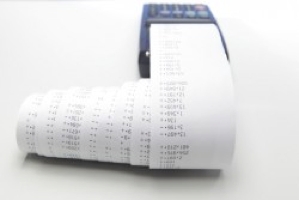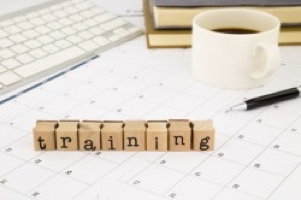Personal tax allowance: Exceptions
 Though the personal tax allowance can give you savings on your income up to £11,850, there are many other ways of saving more money due to the numerous special circumstances and exceptions laid out by HMRC. Allow the tax experts at Tax Agility to guide you through the most important ones.
Though the personal tax allowance can give you savings on your income up to £11,850, there are many other ways of saving more money due to the numerous special circumstances and exceptions laid out by HMRC. Allow the tax experts at Tax Agility to guide you through the most important ones.
Tax on savings interest
Most people can earn some interest from their savings without paying tax. The starting rate for tax savings is £5,000 but is subject to certain conditions. The amount that you don’t have to pay tax on depends on your primary income and personal tax allowance:
- If your primary income is £16,850 or more - You’re not eligible for the starting rate for savings.
- If your primary income is less than £16,850 - Your starting rate for savings is a maximum of £5,000. Every £1 of other income above your Personal Allowance reduces your starting rate for savings by £1.
Remember that this applies to with a personal tax allowance of £11,850. If your personal tax allowance is higher, then the bands are calculated by adding £5,000 to your own personal tax allowance and using that value instead. Additionally, you are entitled to an extra £1000 of tax-free income if you are a basic rate taxpayer, called personal savings allowance. This is cut to £500 if you’re a higher rate taxpayer, with additional rate taxpayers getting no allowance.
Tax on dividends
You may get a dividend payment if you own shares in a company. You only have to pay tax if your dividends go above your dividend allowance in the tax year. The dividend allowance was calculated differently before 06 April 2016, but it has since been changed to a fixed amount each year. Depending on which tax band you are in you can have different rates of tax:
- Basic rate – 7.5%
- Higher rate – 32.5%
- Additional rate – 38.1%
As of 2018/19, there is an allowance of up to £2,000 for dividend income with anything above that taxed according to the above rates. The dividend income must be added to any other taxable income when calculating what you need to pay.
Tax on property and trading income
There are two aspects to tax on property and trading income, both with restrictions, but both allowing £1,000 of tax-free income if you pass. The first aspect concerns income from trading, obtained explicitly from any of the following sources:
- Self-employment
- Casual services such as babysitting or gardening
- Hiring personal equipment such as power tools
If you receive income from these sources, then £1,000 of it is tax-free. Furthermore, if your total gross annual income from trading is less than £1,000, then you don’t need to inform HMRC.
The second aspect concerns income from rented properties. Up to £1,000 of income from these properties is tax-free. However, if the property is jointly owned, then both owners get £1,000 of tax-free income on their individual shares, rather than the income of the house as a whole.
Tax relief
Tax relief occurs when you are repaid tax (or charged less tax overall) for money spent on specific things. It applies primarily to pension contributions, charity donations and maintenance payments, although, you may also use it if you are self-employed or use your own money for travel and necessary equipment for your job. You can also claim tax relief if you have income from working on a ship outside of the UK. Full details about the requirements are on the government income tax relief information page.
Marriage allowance
Marriage Allowance lets you transfer £1,190 of your Personal Allowance to your husband, wife or civil partner if they earn more than you. There are several restrictions on this, and you can only benefit from it if:
- You are married or in a civil partnership
- You do not pay income tax (or your income is lower than your personal allowance)
- Your partner pays income tax at the basic rate, which usually means their income is between £11,851 and £46,350
Overall this can reduce their tax by up to £238 in the tax year. Note that you should call the HMRC if you either receive other income such as dividends or savings or if you are a Scottish taxpayer.
Making sense of tax allowances with Tax Agility
Many of the tax allowances overlap or are conditional on each other, making it a challenge to understand. At Tax Agility, our tax allowance specialists can translate the financial jargon and assist you in applying for tax allowances to get maximum savings.
To find out if you’re missing out on beneficial tax allowances that can help you to save even more money, give our chartered accountants a call on 020 8108 0090. Alternatively, you can use our Online Form.
Before you go, check out:
- Small Business: Tax Incentives
- Are you aware of the tax rules for corporate gifts?
- Personal tax allowance: income tax rates
Homeworking Tax Relief for Your Employees
The rules surrounding small or medium-sized business (SME) tax relief given for homeworking vary depending on whether you’re a sole trader, a partner (within a partnership), or an employee of the SME; even if you are also the owner.
In this article we’re going to be looking at the tax relief available to employees. If you’re an owner-employee, or you employee others who occasionally work from home, it’s important to know that any costs paid for, or reimbursed to, an employee of your company by yourself, the owner, is liable to have tax paid on it. It is the employee’s responsibility to claim the personal tax relief for themselves.
Wholly, Exclusively, and Necessarily
In order for HM Revenue and Customs (HMRC) to award tax relief for employees working from home, it’s up to the employee in question to prove that the costs in question were incurred “wholly, exclusively, and necessarily” while undertaking duties necessary to carrying out their job.
Because HMRC is stricter when it comes to the necessity of employee expenses compared to the self-employed, if you provide something to your employee to aide them in working from home (a work computer, for instance), they are more likely to deem this item necessary to the employee’s work than if the employee themselves had bought a new work computer and wanted to claim tax relief on it.
Place Homeworking Arrangements in Writing
Though not wholly necessary, we would advise you to place all homeworking arrangements with your employees in writing ahead of them taking affect, as your employees won’t be able to claim tax relief on costs associated with carrying out their job from home if they have only been doing so informally.
If you do place this arrangement in writing it will allow you, as the employer, to make payments (or reimbursements) for any additional household expenses your employee requires in order to undertake their job, tax free.
What Your Employees Can Claim Tax Relief On
For the most part this will relate to the additional and proportional costs of lighting and heating the area in which the work is taking place (such as your employee’s home office), as well as the additional and proportional costs associated with increased:
- metered water usage
- internet charges
- business telephone calls
- home contents insurance
To help cover the above costs, you’re allowed to prove your employee with £4.00 per week without having to undergo much formality. Unlike when a self-employed individual works from home, it’s not possible for an employee of your company, even if you yourself are an owner-employee, to claim tax relief on a portion of their rent/mortgage, council tax, or un-metered water rates.
As the employer you will be able to claim capital allowances for the costs of equipment needed by your employees to work from home. This equipment, such as the aforementioned work computer, won’t become a taxable liability for your employee so long as their private (non-work) use of them is insignificant.
For more information on tax relief oppurtunities for your business, click here.
Experienced SME Accountants
To speak with a professional accountant to discuss homeworking tax relief for your employees, or for anything else, contact us today on 020 8780 2349 or get in touch with us via our contact page to arrange a complimentary, no obligation meeting. In the meantime, if you're looking for more information on the different services we have available, check out our services page.
Claiming R&D Relief is Now Faster and Easier

The new Research and Development (R&D) plan, which came into effect last month, has been designed to simplify the process of R&D relief claims for small and medium-sized businesses, while making an effort to increase awareness of the relief among small business owners who are already investing in this area.
With the new Research and Development (R&D) plan the government have handed a boon to small business owners who have previously been put off by the high cost of entry into spaces and sectors that require a substantial amount of research and (ultimately) product development before they can even think about turning a profit.
Financial secretary to the Treasury, David Gauke, said of the new plan:
“R&D is crucial for the long-term growth of the UK economy. Over 15,000 SMEs claimed the relief in 2013, an increase of around 19 per cent from the previous year, but we need to go further to support pioneering small businesses. That’s why we’ve published a document setting out our plans to increase awareness and make it easier for people to apply.”
Claiming is Now Faster, Easier
Here at Tax Agility we believe you should claim all the tax relief your small business is owed in order to maximise your take-home pay. The new Research and Development (R&D) tax relief is no exception.
According to government figures, the 15,000 plus small and medium-sized businesses who claimed R&D tax relief in the 2013-14 tax year received £1.75 billion in tax relief during this period, a saving that is as beneficial to British innovation than it is to the companies themselves.
For this reason alone, the government are striving to make the application process faster and easier for small business owners so they can begin investing in R&D as soon as possible, safe in the knowledge that they’re receiving the tax relief they’re entitled to. Producing an infographic entitled Making R&D Tax Relief Easier, the government outlined the four areas in which they’re working to improve access to R&D tax relief (awareness, design, understanding, and administration), alongside the ways in which they’ve achieved this this year, and the ways in which they plan to continue achieving this in the next two years.
Requirements
In order for your small business to receive the R&D tax relief you must have an annual turnover under £2 million, and you must have fewer than 50 employees.
If you meet these specifications and you wish to receive the relief for any planned (or continuing) R&D in your company’s field, you can receive advance assurance on the R&D tax relief from the government, providing you with some much needed certainty surrounding the tax you’ll be paying, and the reliefs you’ll be able to claim against it, going forward.
Experienced Tax Accountants
To speak with a professional accountant to discuss the tax implications of the new Research and Development (R&D) plan, or for anything else, contact us today on 020 8780 2349 or get in touch with us via our contact page to arrange a complimentary, no obligation meeting.
For information on further government incentives in the form of tax relief, click here.
Take Advantage of Your Capital Gains Tax (CGT) Allowance
 Your Capital Gains Tax (CGT) Allowance, also known as your Exemption Limit or Annual Exempt Amount, is the amount of profit you can make on the sale of property or an investment in a given year before you pay Capital Gains Tax on the amount above this figure.
Your Capital Gains Tax (CGT) Allowance, also known as your Exemption Limit or Annual Exempt Amount, is the amount of profit you can make on the sale of property or an investment in a given year before you pay Capital Gains Tax on the amount above this figure.
You can find out your personal capital gains amount in a given year by deducting any losses and reliefs from the gains you made, thus uncovering your capital gains profit.
For the current, 2015-16, tax year the tax-free allowance is set at £11,100 for individuals (and trustees of disabled individuals; defined as somebody who has mental health problems or receives middle or higher rate of Attendance Allowance or Disability Living Allowance), and £5,550 for other trustees.
Making Use of Your Capital Gains Tax (CGT) Allowance
As everybody who is liable to pay Capital Gains Tax can receive this allowance, it’s possible for you and your spouse or partner to make effective, legal use of your combined allowances to ensure you pay as little tax on your capital gains as possible by transferring assets between you, or placing them in joint names before an impending sale.
This method is deemed wholly legal by HM Revenue and Customs (HMRC) as couples are often looked upon as a joint unit, despite the fact that each partner receives an individual Capital Gains Tax Allowance.
Another way you can make best use of your allowance, should you be expecting to make a particularly large gain, is to spread the monetary release of this gain over a number of tax years so to make full use of your tax exemption limit, assuming this is an acceptable option for you.
Capital Gains Tax (CGT) Rates
Any capital gains profit you make in a given year that’s over your Capital Gains Tax Allowance will be taxed at the Capital Gains Tax rates for that year.
The rates for the current, 2015-16, tax year haven’t changed since 2013, with the rate you have to use depending on the total amount of taxable income you make in the year in question (including profit from your small business, dividends, and salary payments). These rates are currently:
- 18% or 28% for individuals
- 28% for trustees or representatives of someone who has died
- 10% for capital gains that qualify for Entrepreneurs’ Relief
Experienced Capital Gains Tax (CGT) Accountants
Whether you’re a small to medium-sized business (SME) owner, or you’re looking to sell some property or investments in the near future, consider using our free Capital Gains Tax Calculator to estimate your capital gains liability, once your tax-free allowance has been deducted.
To speak with a professional tax accountant to discuss how to make the most of your (and your spouse/partner’s) Capital Gains Tax Allowance, contact us today on 020 8780 2349 or get in touch with us via our contact page to arrange a complimentary, no obligation meeting.
Ten Ways to Pay Less Tax
 Looking for smart ways to pay less tax should be seen as a critical part of your tax planning, both on behalf of your personal finances and the finances of your business.
Looking for smart ways to pay less tax should be seen as a critical part of your tax planning, both on behalf of your personal finances and the finances of your business.
Though some may feel that doing all you legally can to keep your tax bill as low as possible isn't something they would wish to be associated with, the truth is you're already paying for these reliefs and allowances to be used by others.
Regardless of how you feel about them, these reliefs, allowances, and exemptions are here to stay.
The only question is – are you going to use them, or be used by them?
Tax Relief on Pension Contributions
 In an effort to encourage you to put something aside for your retirement, the Government provide varying levels of tax relief on private pension contributions, whether you’re placing money into a personal or workplace pension (or both).
In an effort to encourage you to put something aside for your retirement, the Government provide varying levels of tax relief on private pension contributions, whether you’re placing money into a personal or workplace pension (or both).
This tax relief on private pension contributions can be used to reduce the amount of tax you pay, or increase the size of your pension fund, with you being able to claim relief worth up to 100 percent of your annual take-home earnings (including your salary, dividends, and all investment income).
Keep in mind, in order to be able to claim tax relief your personal (or workplace; whether your own, or your employer’s) pension provider must be registered with HM Revenue and Customs (HMRC).
Personal Pensions
Because you’ve already paid tax on any income you pay into a personal pension you’ll automatically get tax relief on these contributions, with your pension provider claiming back your income tax at the basic 20 percent rate to place into your pension pot (known as the ‘relief at source’ method).
If you pay tax at the higher, 40 percent rate, the Government allow you to claim back the extra 20 percent tax you paid on your pension contributions via your Self Assessment tax return to ensure you’re not missing out. If you don’t currently complete a Self Assessment tax return you may contact HMRC directly to reclaim the extra tax payments.
Workplace Pensions
If you’re self-employed with a number of employees of your own, there’s a good chance that you already have a workplace pension set up for them, and yourself.
If you’re employed by someone else, however, you may find that your employer has been making contributions into your workplace pension all along; with them deriving these contributions from your pay directly before they deducted your income tax. Known as a net pay arrangement, you won’t pay tax on these workplace pension contributions but you will be liable to pay National Insurance Contributions (NICs) on them.
Limits to Tax Relief on Pension Contributions
There is, of course, a limit to the amount of tax relief you can receive on your private pension contributions in a given year; though this limit is, arguably, very reasonable.
You can receive tax relief on contributions up to 100 percent of your annual take-home earnings (up to the age of seventy-five), with you being able to place these contributions into a number of different pension schemes, not just one. The Government, on their website, make it clear that it’s your (or your accountant’s) responsibility to ensure you don’t receive tax relief worth more than 100 percent of your earnings in a given year.
The actual amount you can save into private pension schemes each year has a top quota, with this being £40,000 for the 2015-16 tax year.
Experienced Tax Accountants
To speak with a professional tax accountant to discuss receiving tax relief on pension contributions, whether in your personal or workplace pension, contact us today on 020 8780 2349 or get in touch with us via our contact page to arrange a complimentary, no-obligation meeting.
Register for The New Marriage Allowance
 Announced in 2013, the Marriage Allowance is a much sought-after tax break for married couples (or couples in a civil partnership), with online registration to receive the allowance having opened last month.
Announced in 2013, the Marriage Allowance is a much sought-after tax break for married couples (or couples in a civil partnership), with online registration to receive the allowance having opened last month.
From 6 April 2015, over four million married couples and 15,000 civil partners across the country will become eligible for the Marriage Allowance tax break, allowing a spouse or civil partner that doesn’t pay tax (receiving no income, or income below the £10,600 tax-free threshold) to transfer 10% (£1,060) of their tax-free allowance to their higher-earning spouse or partner, so long as they don’t earn above the basic tax band, currently set at £42,385.
How to Apply
The Government wishes for those interested in receiving the Marriage Allowance tax break to first register their interest online, so long as you meet the eligibility criteria detailed above. It should be noted that if you or your spouse/civil partner were born before 6 April 1935 you should instead apply for the Married Couples Allowance.
When you head to the Marriage Allowance online portal you’ll be asked for your name and email address, through which the Government promise to contact you when you can apply.
From 6 April 2015 HM Revenue and Customs (HMRC) will begin sending out invitations to those who have previously registered their interest in applying for the Marriage Allowance. HMRC advise that applicants will be invited to register in stages; so don’t worry if it takes a while for you to receive your invitation. There’s no disadvantage to registering late: so long as you apply during the 2015 to 2016 tax year, eligible applicants will receive the full tax break.
The Marriage Allowance Registration Announcement
Speaking on the opening of the Marriage Allowance’s registration phase last month, Chancellor of the Exchequer George Osborne commented that the new tax break will save most qualifying couples up to £212.00 on their annual tax bill. Speaking at the same event, Prime Minister David Cameron focused on both the economic and family-driven benefits of the allowance, saying:
I made a clear commitment to the British people that I would recognise marriage in the tax system - so I am delighted that we’re just a little over a month away from it coming into effect. We can afford to do it because of the growing strength of the British economy. And as a result, it means families up and down the country can get a little bit of extra support and more financial security.
Mr Cameron continued:
But this policy is about far more than pounds and pence. It’s about valuing commitment. Families are the bedrock of our society. It is families who raise our children, look after our old and keep our country going. And this tax change is about saying as a society, we recognise that.
Experienced Accountants
To speak with a professional to discuss your eligibility for the Marriage Allowance tax break, contact us today on 020 8780 2349 or get in touch with us via our contact page to arrange a complimentary, no obligation meeting.
The Tax-Free Childcare Scheme
 Announced by the Prime Minister and Deputy Prime Minister back in March 2014, the Tax-Free Childcare Scheme finally launches this autumn, a scheme designed to help millions of working parents across the United Kingdom tackle rising childcare costs.
Announced by the Prime Minister and Deputy Prime Minister back in March 2014, the Tax-Free Childcare Scheme finally launches this autumn, a scheme designed to help millions of working parents across the United Kingdom tackle rising childcare costs.
The Government consulted with parents, childcare providers, employers, and other interested parties before announcing the scheme. Speaking on its necessity, the Prime Minister said, “Tax free childcare is an important part of our long-term economic plan. It will help millions of hard-pressed families with their childcare costs and provide financial security for the future.”
The new scheme is available to nearly two million households up and down the country for all children up to aged twelve, and children with disabilities up to aged seventeen, provided parents are in work, earning over an average of £50.00 a week (and under £150,000 per year). This low threshold makes it possible for parents working part-time jobs to also benefit.
Read more
How to Save Money on Your Self-Assessment Tax Return
 The new year is now well underway, which can mean only one thing for self-employed small (and medium-sized) business owners; it’s time to finally get around to submitting your self-assessment tax return.
The new year is now well underway, which can mean only one thing for self-employed small (and medium-sized) business owners; it’s time to finally get around to submitting your self-assessment tax return.
Your 2013-14 self-assessment tax return is due at midnight on 31 January 2015, as is your final payment of any tax due.
There are dozens of ways to save money on your tax return year after year; some of the most rewarding of which are summarised below:
Maximise Your Tax-Free Personal Allowance
If you’re married or in a civil partnership you can maximise your joint tax-free personal allowances by transferring income between each other so to ensure neither of your personal allowances go unused.
Your personal allowance for the current tax year (2014-15) is set at £10,000, meaning should your spouse earn less than £10,000 a year, they can transfer the unused portion of their personal allowance to you, allowing you to benefit from a slight tax break on this amount.
Use Your ISA Allowance
In the last twelve months Individual Savings Accounts (ISAs) have been completely transformed.
Whereas before you could only use half of your tax-free ISA allowance as a cash investment (the other half having to be placed into stocks and shares), under the new rules you can save up to £15,000 into your ISA each year, with a choice as to whether you want the full amount to consist of cash, stocks and shares, or a combination of both.
Invest In a Pension Scheme
Investing into a personal pension scheme (or one organised by your place of work) allows you to save money on your tax return by way of tax relief of up to £40,000 a year.
It’s possible to opt to push forward your allowance for up to three years, an option that’s of considerable use should you currently not wish to invest into a scheme for whatever reason, but you’re confident you’ll wish to do so in a few years from now. If you do have the money to invest now, however, you’re encouraged to make the investment (and benefit from the tax relief) immediately.
Use Your Capital Gains Tax Exemption
Chances are you won’t need to think twice about your Capital Gains Tax (CGT) exemption limit if you’re not planning on selling assets of particular significance (and expense).
If you do choose to sell such an asset, however, you can make best use of your Capital Gains Tax exemption limit (set at £11,000 for 2014-15) by transferring certain assets to your partner (or becoming joint-owners) ahead of selling it on.
Maximise Your Annual Investment Allowance
The Government has been increasing and decreasing the Annual Investment Allowance (AIA) for years now, with the most recent increase; from £250,000 to £500,000 in place until 31 December 2015.
Designed to stimulate business investment across the economy, this allowance can be deducted from your taxable profits. According to Chancellor of the Exchequer George Osborne, “99.8% of businesses will get a 100% investment allowance… [meaning] almost every business across Britain will pay no upfront tax when they invest in the future.”
Place Investment Capital in EIS/SEIS Schemes
If you’ve not done so already, placing investment capital into the Enterprise Investment Scheme (EIS) and Seed Enterprise Investment Scheme (SEIS) allows you to receive healthy tax reliefs while helping small business owners across the country.
Investors in the EIS should expect to receive up to 30% tax relief on income tax, Capital Gains Tax, and inheritance tax. Investors in the SEIS have the potential to receive up to 78% in tax relief (50% income tax relief on invested funds, and 28% Capital Gains Tax relief).
Claim for Capital Losses
You can claim for capital losses by carrying them forward into the next tax year, and therefore reducing your Capital Gains Tax over time. These losses will be offset against your profits from the same trade.
You may also claim for capital losses by carrying back any trading losses; offsetting them against other income in the year. Unlike carrying your loss forward, however, which happens without any input from you, carrying back trading losses is a fairly complicated process and you’re therefore encouraged to speak with your accountant before carrying them back.
Maximise Your Wear and Tear Allowance
If you rent furnished properties you’re legally within your right to claim a wear and tear allowance each year, an allowance (currently set at 10% of the relevant rental amount) that allows you to offset some of the ongoing costs that come with renting such properties; with the allowance directly reducing your taxable rent.
Call Us to Save Money on Your Self-Assessment Tax Return
To speak with a professional to discuss how you can save money on your self-assessment tax return, contact us today on 020 7129 1199 or get in touch with us via our contact page to arrange a complimentary, no obligation meeting.
How to Get Corporation Tax Relief on Work Training Costs
 If you’re the owner of a small to medium-sized business (SME) currently operating as a Limited company, you can receive Corporation Tax relief against work-related training costs occurred when you and your employees attend corporate training courses.
If you’re the owner of a small to medium-sized business (SME) currently operating as a Limited company, you can receive Corporation Tax relief against work-related training costs occurred when you and your employees attend corporate training courses.
Business Expense vs. Capital Expenditure
In a recent article on how to understand self-employed expenses we gave the example of a self-employed writer attending a training course on writing; this would be deemed to be an allowable business expense in the eyes of HMRC.
A similar example from the point of view of a Limited company could be that of a small marketing agency attending a course on social media marketing. HMRC would deem this to be work-related training, and would therefore allow you to claim Corporation Tax relief against the cost of the event.
Corporation Tax relief will only apply, however, to work-related training courses that are designed to ‘update or enhance’ you and your employees existing skills in the areas in which your company operates. If you choose to attend a training course so to learn a new skill that you’re planning to incorporate into your business at a later date, this is seen as capital expenditure.
Back to the example of the Limited company marketing agency; should they choose to attend a training course on accounting practices with the intention of offering accounting services to their clients somewhere down the line, HMRC would treat this as capital expenditure and allow them to claim Capital Allowances, rather than Corporation Tax relief.
Attending Work-Related Training Overseas
When you attend work-related training courses in the UK, any travel costs to and from the course location you and your employees incur also count towards your Corporation Tax relief, assuming you didn’t travel with greater extravagance than normal.
For this reason, it’s notoriously difficult to persuade HMRC that it’s necessary for you to attend a work-related training course overseas, regardless of how relevant it is to your line of work.
Should you have to attend such a course in a foreign land, to have any chance of persuading HMRC that doing so is an allowable business expense you’ll need to be able to clearly show them that your Limited company’s business commitments going forward couldn’t be performed without the knowledge that the training brought to you. You should also be prepared to produce the entire itinerary of your trip for HMRC to look over.
Keep in mind that the warmer the location of your training course, the longer HMRC will spend looking over your claim; they’ll approve Corporation Tax relief on a trip to Sweden sooner than they’ll approve relief on a dalliance in the Bahamas. And don’t forget that HMRC will disallow portions of your trip from potential relief should it be used for purely personal purposes.
How to Get Corporation Tax Relief on Work Training Costs
To speak with a professional to discuss the likelihood of you receiving Corporation Tax relief on an upcoming training course you’re due to attend, contact us today on 020 7129 1199 or get in touch with us via our contact page to arrange a complimentary, no-obligation meeting.









